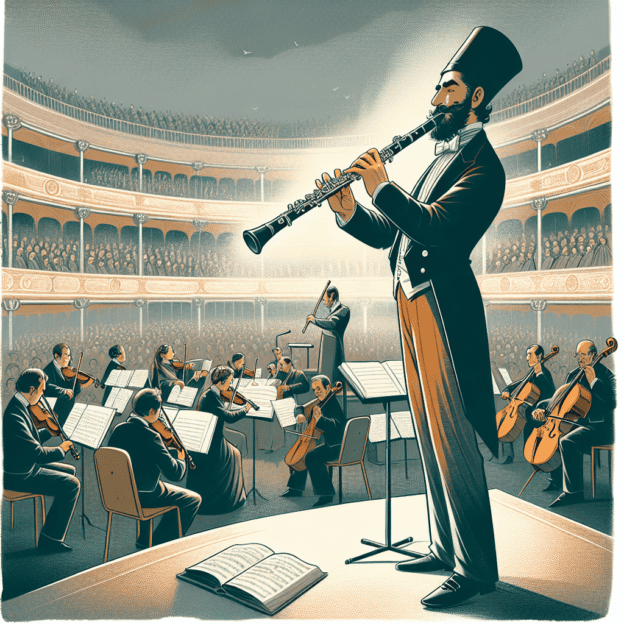The Evolution of Clarinet Performance Etiquette
Have you ever wondered how clarinet performance etiquette has changed over time? From the grandeur of Baroque ensembles to the expressive Romantic concert halls, historical clarinet performance etiquette offers a captivating glimpse into the past. It goes beyond simply playing the notes; it's about embracing the stylistic and cultural practices that shaped each era. Let's explore the world of clarinetists from bygone days and uncover the principles and expectations that molded their art.
The Baroque Era: Precision and Balance
During the Baroque period, the focus was on precision and balance within the ensemble. The clarinet was in its early stages, with chalumeau-like instruments often taking lead roles. Musicians followed strict rules of posture and movement while performing. The goal was to blend seamlessly with other instruments rather than stand out. Picture a time when a clarinetist's ability to blend was more admired than their solo skills! This era celebrated the partnership between musicians.
The Classical Era: Elegance and Restraint
As we move to the Classical era, the clarinet began to shine on its own. Composers like Mozart embraced the instrument, featuring it more prominently in symphonies and chamber works. Yet, performance etiquette remained formal. Clarinet players maintained a poised stance, avoided exaggerated gestures, and showcased technical precision. Even their entrances and exits on stage exuded sophistication. It was common to see a clarinetist bow deeply, acknowledging both the audience and their fellow musicians as a sign of respect.
| Era | Key Characteristics | Performance Style |
|---|---|---|
| Baroque | Precision, balance, ensemble focus | Subtle, blending with other instruments |
| Classical | Formal, technically precise | Poised, elegant, restrained |
| Romantic | Emotional expression, larger orchestras | Theatrical, expressive, personality-driven |
The Romantic Era: Emotion and Theatricality
The Romantic era brought a surge of emotional expression, influencing both the music and performance style. By this time, the clarinet had established its unique identity and versatility. Orchestras grew larger, stages became grander, and solo clarinet pieces flourished. Performance etiquette became more theatrical, with clarinetists encouraged to infuse their stage presence with personality and emotion. However, grace and professionalism remained important aspects of their performances.
The Impact of Historical Clarinet Brands
When examining historical clarinet brands, it's hard not to think of renowned companies like Martin Freres Clarinets, known for their exceptional craftsmanship. These instruments were perfectly suited to meet the era's growing demands for tonal range and control. A clarinetist's instrument was as much a part of their etiquette as their appearance and conduct on stage.
Modern Lessons from Historical Etiquette
Today's performances still carry threads of tradition from the past. Posture, silent respect during rests, and thoughtful interpretation all harken back to centuries-old practices. To incorporate historical clarinet performance etiquette into the modern world, musicians often explore period-specific interpretations while balancing them with current expectations of accessibility and audience engagement.
Incorporating Historical Traditions
For clarinetists interested in honoring these traditions, there are simple ways to blend historical etiquette into your approach:
- For Baroque pieces: Focus on ensemble cohesion
- For Classical works: Emphasize elegance and restraint
- For Romantic compositions: Embrace expressive nuances
Your audience might not consciously recognize the historical etiquette, but they'll certainly appreciate the authenticity of your performance.
Educational Value of Historical Etiquette
For students, exploring historical clarinet performance etiquette can be an engaging way to deepen their musical understanding. Teachers can bring this concept to life through storytelling and live demonstrations of stylistic differences. Many find the unwritten rules that once governed clarinetists in royal courts and concert halls fascinating.
Professional Applications
For advanced players and professionals, delving into historical research can enrich performances and potentially open doors to specialized opportunities in period ensembles or academic settings.
Conclusion
The etiquette of clarinet performance is more than just a historical footnote—it's a dynamic story of how artistry grows and adapts to cultural shifts. Whether you're drawn to the works of Bach, Mozart, or Brahms, remember to cherish the connections these time-honored practices can bring to your music-making today.
Table of Contents
- The Evolution of Clarinet Performance Etiquette
- The Baroque Era: Precision and Balance
- The Classical Era: Elegance and Restraint
- The Romantic Era: Emotion and Theatricality
- The Impact of Historical Clarinet Brands
- Modern Lessons from Historical Etiquette
- Incorporating Historical Traditions
- Educational Value of Historical Etiquette
- Professional Applications
- Conclusion







